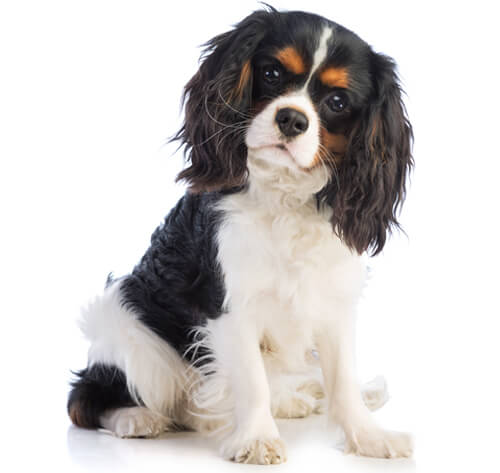
The King Charles Spaniel is an enthusiastic, eager-to-please little dog that thrives on companionship. This breed was a pet to many royals including Charles I and Queen Victoria. A descendant of hunting dogs, the King Charles Spaniel loves to romp outdoors. The breed needs moderate exercise, and his feathered coat requires regular grooming.
DID YOU KNOW? The King Charles Spaniel is named for King Charles II, who was particularly fond of the breed. Rarely seen without a Spaniel at his heels, he wrote a decree that the breed should be accepted in any public place, even the Houses of Parliament. The King Charles Spaniel gained notoriety on the television show “Sex and the City” as Charlotte York’s beloved pet.
The need-to-know
- Dog suitable for non-experienced owners
- Basic training required
- Enjoys gentle walks
- Enjoys walking an hour a day
- Small dog
- Minimum drool
- Requires grooming every other day
- Non hypoallergenic breed
- Chatty and vocal dog
- Guard dog. Barks and alerts
- Great with other pets
- Great family dog
Personality

A gentle, happy and loving dog, the King Charles Spaniel is a rewarding companion dog. He can be reserved with those he doesn't know, but with friends and family, he is most affectionate. He gets along with other dogs and pets, and enjoys the company of old and young alike, but children must be careful around him, as his size makes him vulnerable to accidental injury.
History and Origins

Originating from working gundogs, the Toy Spaniel dog was miniaturized to be the companion dog of aristocratic ladies and it is from this centuries-old type that the King Charles Spaniel dog breed descends. Crossed with Oriental toy breeds, such as the Pug and Japanese Chin, he has the large eyes, domed skull and flattened face that was popular with toy dogs from the Far East. His most famous fan, of course, was King Charles II, after whom he takes his name.
Nutrition and Feeding

Toy dogs have a fast metabolism, meaning they burn energy at a high rate, although their small stomachs mean that they must eat little and often. Small-breed foods are specifically designed with appropriate levels of key nutrients and smaller kibble sizes to suit smaller mouths. This also encourages chewing and improves digestion.
Exercise

A small breed, the King Charles doesn't need very much exercise and will be happy with half an hour's daily walking, though he will accept more if you can offer it. They enjoy games with their owners, and they are clever dogs who also enjoy training.
Other Information

Health and Common Issues
Syringomyelia, a serious, painful neurological condition, has been reported in some King Charles Spaniels. In common with many small breeds, the King Charles Spaniel may suffer slipping kneecap(s), and those with a very flat face may also experience respiratory problems.
Best Family Dog Breeds
While many dogs are traditionally thought of as being good with children, all dogs and children need to be taught to get on with and respect each other, and be safe together. Even so, dogs and young children should never be left alone together and adults should supervise all interactions between them.